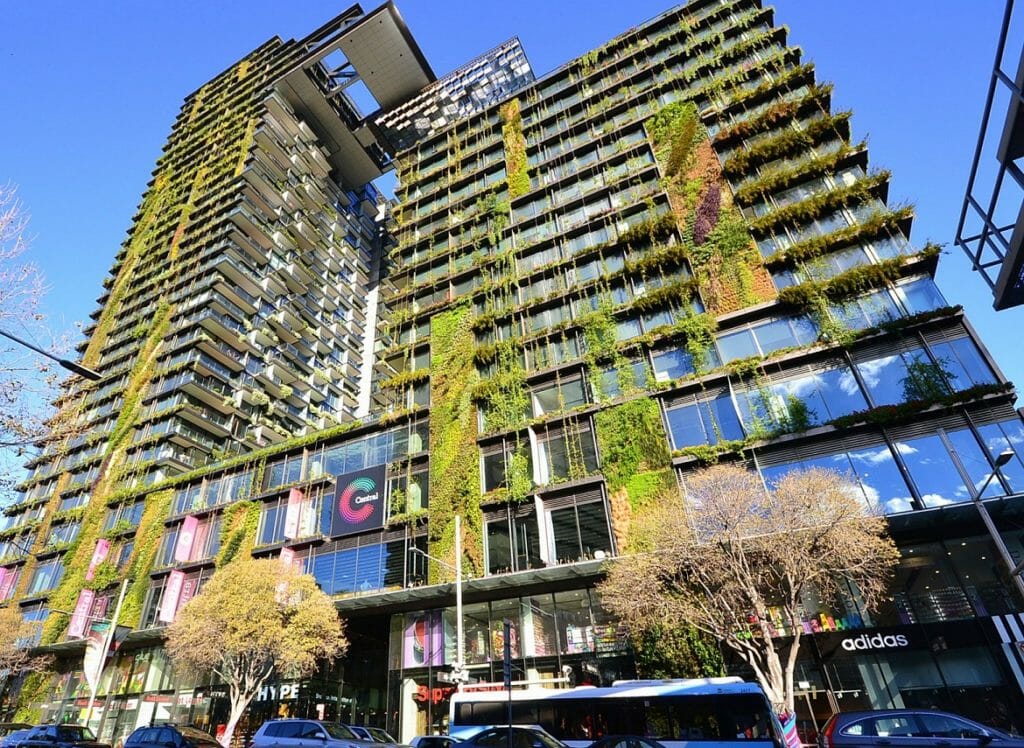News
Modern treehouses

Green is in, and it’s not just about renewable energy. Many of today’s most visually striking structures are literally covered in green, with trees, plants, and flowers that are as integrated into the façade as windows and doors. No longer content to serve as mere landscape features, today’s vegetation is increasingly going vertical and seems just as at home 30 floors up as it is on the ground.
Botanical cladding takes the edge off of glass and steel, lending a lush, verdant feel to the built environment. Plants provide natural shading and can offset energy requirements for cooling by 25 percent or more. And redirecting a building’s gray wastewater away from the sewer and into planters reduces a structure’s impact on municipal utilities.
And such buildings are winning awards left and right. The Council On Tall Buildings and Urban Habitat (CTBUH), for example, named Sydney’s One Central Park the world’s best tall building of 2014. One Central Park is covered in 250 species of Australian native flowers and plants and has more than 5 kilometers (3 miles) of planters encircling the structure. The vegetation echoes a park located at the tower’s base and serves as an extension of that green space all the way to the top. Ensuring the design included wind resistant vegetation that can flourish in that environment, each resident, then enjoys his or her own personal slice of a grand garden.
But One Central Park is by no means unique. Bosco Verticale in Milan, a 116 meter (380 foot) two-tower complex that the CTBUH named Europe’s best tall building of 2015, includes more than 700 trees, 11,000 plants, and 5,000 shrubs representing more than 90 unique species. The selection committee described the building as “unprecedented in its deployment of greenery at such scale and height” and were impressed at how the vegetations acts “as an extension of the tower’s exterior envelope.” The Council also named Singapore’s CapitaGreen tower, more than half of which is covered in live vegetation, as Australasia’s best tall building of 2015.
Such ideas aren’t new. The Hanging Gardens of Babylon, for instance, one of the Seven Wonders of the Ancient World, remain legendary for what is imagined to have been an impressive feat of structural engineering and water diversion. And the chinampa of Tenochtitlan made possible what is widely recognized as one of the most culturally complex and technologically advanced cities in pre-Hispanic Mesoamerica.
Considered historically, covering a building in vegetation is a technique that has come full circle. By embracing the natural beauty and environmental benefits of plants, today’s architects are recognizing what their ancient counterparts already knew: that botanical design features naturally promote human-scale spaces that are safe, comfortable, and efficient.
